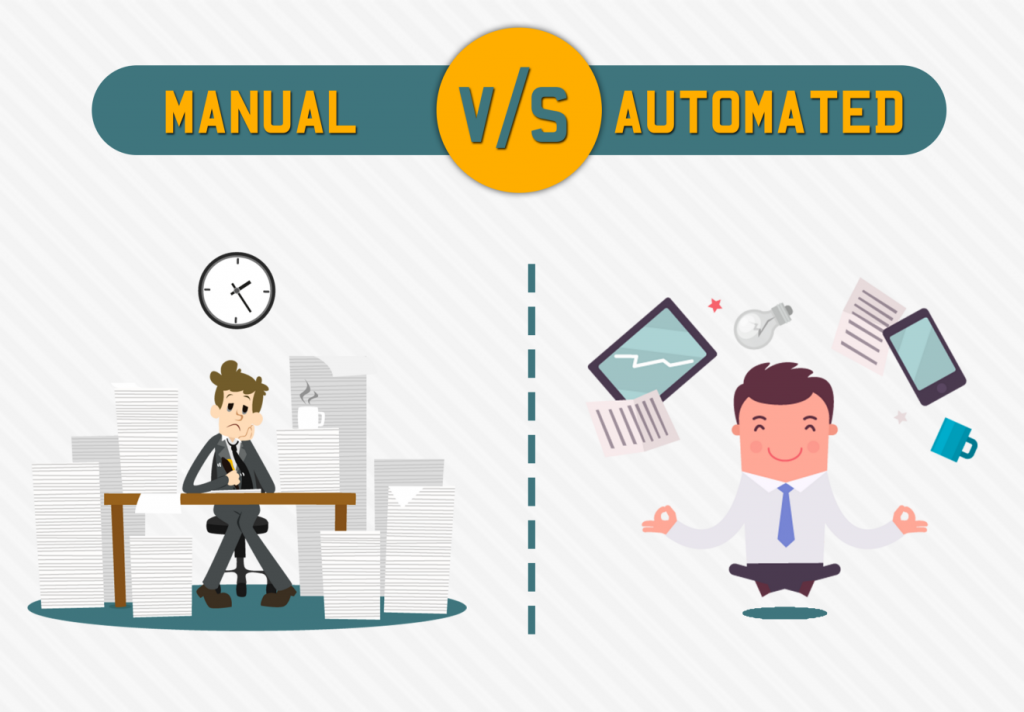Software requirements change at a rapid speed nowadays, and it leads not only to the flexibility of testing and improvement in its methodology. More and more quality assurance specialists are drawn to develop their professional skills that are dictated by the technology landscape. It is inevitable that the adoption of agile practices is becoming popular as the transition to automatic tests eliminates human errors that are completely indispensable when testing manually. However, both types can be complementary and necessary in the software development process. Those tests that deal with repetitive and tedious tasks are the ideal ones to be automated, as they will do it in a faster and more efficient way. Moreover, since they are repeatable, they can be performed whenever a change occurs in the code. Manual tests, on the other hand, involve deeper analysis and a more realistic perspective, so they are commonly used to evaluate usability and user experience.
Despite the importance of manual testing in the software development life cycle, a large number of companies are making their choice in favor of automation at the moment. While business calls for faster and smarter solutions, manual tests remain a fallible and time-consuming one. If you are not considering the shift towards automated testing yet, here are some advantages you sleep on:
- Precision
With automated tests, the typical errors caused by developers when performing manual tests are eliminated. Each time an automated test is run, it is done precisely, always executing the same operations, that provide a more accurate and reliable result. During the development cycle, the tests must be executed anytime the software is modified and can be done automatically each time changes are made.
- Time and cost reduction
Automated tests have a shorter execution time, though their initial implementation cost is high. However, saving time mitigates initial investment, making it much more economically profitable. The speed of execution can also be a major factor that will eventually impact the cost of the product. Meanwhile, shortening the cycle of development and facilitating the Time to Market (TTM) is also achieved by automation testing.
- Reuse
Automated tests can be repeated to check how the software reacts. Performing the tests several times will detect errors or non-optimized processes that need corrections. Thanks to the capabilities of automation testing, updates or new versions of software can be delivered more frequently – even several times per week, when if tested manually – in months.
- Increase in productivity
The work of the whole team can benefit from test automation by not having to spend valuable time constantly performing manual tests, just as simple as that. Their motivation and involvement in dedicating themselves to other more complex tasks will make them much more productive, helping to increase the value of the developed software.
- Basis for CI and DevOps
Continuous Integration and DevOps setup require an automated testing suite for better performance. The quality assurance basically detects regressions in the development of software as soon as they appear. To produce a foolproof check, a test can be run each time a developer commits to the codebase.
Although the transition from manual testing to automatic may seem complicated, it is worth the effort. To get a better understanding of where to start, you should consider these key points when getting down to it.
- Build your coding skills
Learning how to program may come out of fear of the complexities involved in automation testing. But when pursuing a career as a quality assurance specialist, the ability to program is a valuable skill that can help you test software more efficiently. In this case coding knowledge is one of the essential skills you can successfully apply in automation testing.
- Choose useful tools and frameworks
Making this uneasy but necessary change can save you a lot of time in the long term. With automation testing, you won’t need to fix anything by hand for days. For acceleration of the process, however, try to choose and then use a combination of tools and frameworks. The usage of Selenium WebDriver has proven to be a trusty foundation for the automated testing approach so you can accompany it with other tools according to the product requirements.
- Start simple and small but make it successful
It is important to start with uncomplicated and small-scale test cases when you are making your way into a new type of testing. Such test cases are easy to automate, debug, maintain and reuse.
- Enhance basic knowledge
Building automated tests can seem intimidating at first glance and it probably will require gaining additional knowledge and new skills. Certainly, to become an experienced QA automation engineer requires patience, time, and continuous learning. Fortunately, there are many resources you can make use of. It can be anything from effective communication with those who already automate or discussion forums and blogs.
Undoubtedly, the context of the software under test is not a minor characteristic and not everything can be automated. But in any case, it is preferable to perform automation testing at all levels – with a greater effort at the lowest levels – such as unit and API tests, and not exclusively at the user interface level.
With the above in mind, the exercise of automating software testing can be a great productivity enhancer. So, if you were contemplating the shift from manual testing to automation, now it’s high time! Join the Coherent Solutions team in Moldova to become one of QA professional engineers.
Contact us directly at: hr@coherentsolutions.md or job@coherentsolutions.md
Image source: https://www.testin.net/blog/manual-vs-automation-testing.htm
